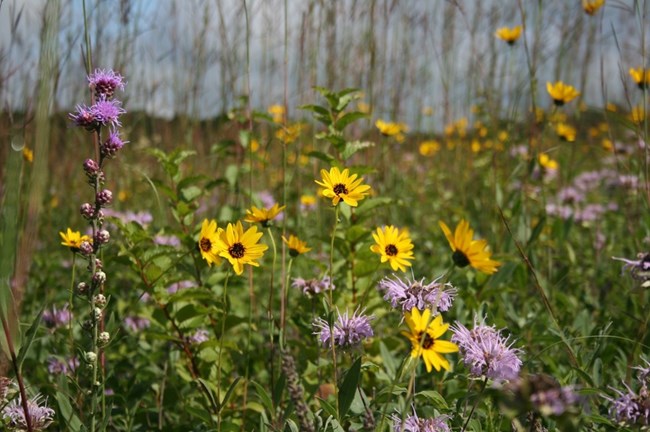Last updated: April 2, 2018
Article
Air Quality Related Values in National Parks

NPS Photo
Air quality related values (AQRVs) are resources that may be adversely affected by a change in air quality. The resource may include visibility or a specific scenic, cultural, physical, biological, ecological, or recreational resource. NPS AQRVs include visibility, vegetation, water quality, soils, and fish and wildlife.
The harm to national park resources from air pollution depends on how much and what kind of pollutant exposure occurs, and on the sensitivity of park resources. The amount and type of air pollution varies considerably across national park lands as does the sensitivity of resources. These reports synthesize current scientific understanding about the causes and effects of air pollution for more than 270 parks with identified natural resources. These are the NPS Inventory and Monitoring parks. Pollutant categories evaluated here include:
- ground-level ozone
- particles affecting visibility, and
- atmospheric deposition of acids, nutrients, and toxics
Recent trends in pollutant exposure and adverse effects to AQRVs are highlighted. Where possible, this report series also identifies the levels of pollutant deposition where harm to resources is known (critical load).
An interactive mapper is also available to visualize relative nitrogen pollutant exposure, ecosystem sensitivity, park protection mandates, and overall park and network risk.
Select an AQRV report from the network map or list below.
Air Quality Related Values Network Map

Main Report
Inventory & Monitoring Network Reports
- Appalachian Highlands
- Arctic
- Central Alaska
- Chihuahuan Desert
- Cumberland Piedmont
- Eastern Rivers and Mountains
- Great Lakes
- Greater Yellowstone
- Gulf Coast
- Heartland
- Klamath
- Mediterranean Coast
- Mid-Atlantic
- Mojave Desert
- National Capital Region
- North Coast and Cascades
- Northeast Coastal and Barrier
- Northeast Temperate
- Northern Colorado Plateau
- Northern Great Plains
- Pacific Island
- Rocky Mountain
- San Francisco Bay Area
- Sierra Nevada
- Sonoran Desert
- South Florida / Caribbean
- Southeast Alaska
- Southeast Coast
- Southern Colorado Plateau
- Southern Plains
- Southwest Alaska
- Upper Columbia Basin
